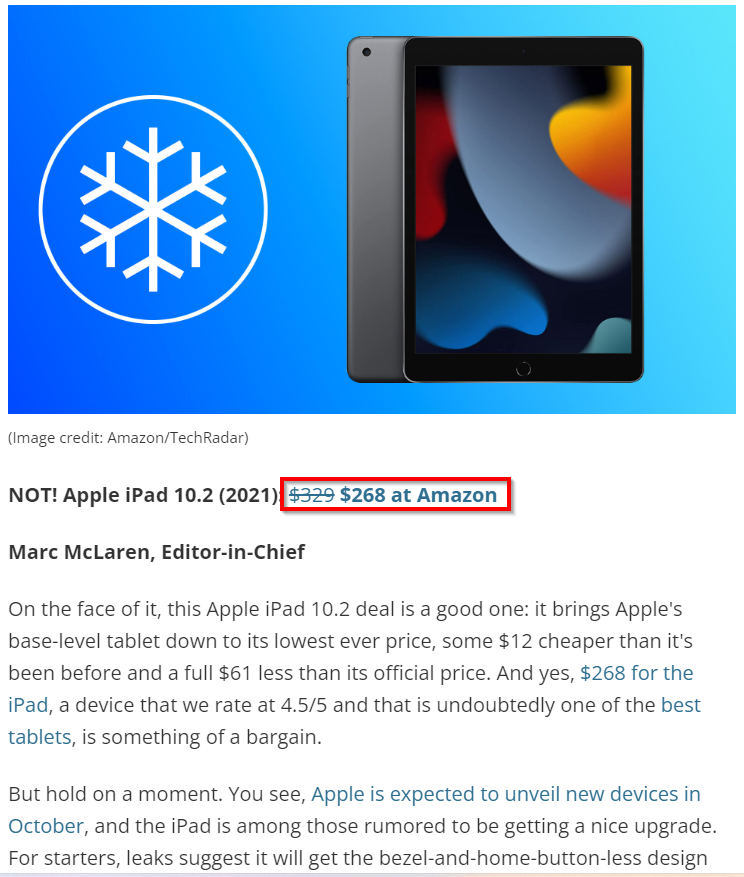Affiliate Marketing vs Dropshipping: Which to Choose and Why
You might be a novice in marketing trying to figure out where to start or a seasoned digital marketer who wants to expand their list of marketing channels in your portfolio.
No matter the case, if you have tried to research lucrative channels to increase sales revenue, you might have stumbled upon both affiliate marketing and dropshipping.
If both of these approaches have sparked your interest, you will face a natural dilemma – which one to choose.
Don’t worry, our guide will explain the intricacies of both approaches and compare them side-by-side to make it easier for you to choose the one that fits you best.
What is Affiliate Marketing?
Affiliate marketing is a channel for promoting the products and services of the brand with the help of creators, bloggers, and media owners (a.k.a. affiliates). As compensation for their efforts, brands will pay these creators commission fees for each paid customer or sign-up.
To give you a quick overview of how this channel works, let us break down the process of affiliate business into several main steps in more detail:
- The brand sets up an affiliate program. Here, the company provides the list of products and services that it wants to promote, presents its affiliate commission fees, and what it will pay commissions for. For instance, some programs will pay for a successful purchase, while others will get you a commission for a sign-up.
- Affiliates sign up for these programs and receive their affiliate links. When affiliate marketers choose the product they want to promote, they will get a link with their unique ID that they can use in their advertising materials. Affiliates can sign up for these programs directly or via affiliate networks or retargeting platforms (e.g., ClickBank).
- Affiliate marketers promote the products they’ve chosen. After getting the affiliate link, creators can start adding promotional materials about these products on their blog, YouTube channel, or social media pages and prompt their audience to click on their affiliate link.
- Users open the link and make a purchase. When users click on the affiliate link, they go to the brand’s website, where they can see the product or service that the affiliate marketer is promoting and purchase it. As soon as the purchase is complete (a successful conversion), the brands will use the unique ID in the link to identify the affiliate marketer who referred the paying customer and pay them a commission.
Affiliate marketing is highly beneficial both for the brands and the media owners. For brands, it serves as an extra channel to increase sales revenue that does not take too much effort or time. From the point of view of media owners, affiliate marketing is a lucrative way of monetizing their audience and traffic.
Now, to get a better grasp of this channel, let us look at one of the affiliate marketing examples.

Here we have a snippet from a TechRadar article about some of the best and worst deals on Amazon.
Apart from sharing valuable insights with their readers about these deals, the team at TechRadar has also added affiliate links that take to the corresponding offer on the Amazon website. When you make a purchase using this link, Amazon will pay TechRadar a commission for bringing them a paying customer.
Affiliate marketing looks quite promising at first glance. But is it really worth getting into? Yes, it is, and here is a list of benefits you can get from this channel.
What are the Main Benefits of Affiliate Marketing?
Affiliate marketing is a rapidly growing discipline in the digital marketing world (with market size of $13 billion in 2022 and a forecast to reach $15.7 billion by 2024).
The reason behind this growth is the wide variety of advantages businesses and affiliate influencers get from this channel. Now let’s look at some of them up next.
Benefit #1: Low-startup costs
You’d be surprised, but getting started with affiliate marketing is cost-effective both for companies and affiliates.
Brands do not need to spend a considerable amount of money to create an affiliate program. There is no need to develop a website where your affiliate marketers will choose your products to promote and get the links, as the internet is full of ready-made solutions you can use.
With these affiliate platforms, you can easily set up a landing page to recruit affiliates and manage your products, affiliate links, as well as commission payouts.
Affiliates do not need to invest any funds into their affiliate operations either. Signing up for affiliate programs is free, and placing affiliate links in your content does not incur any additional costs.
Benefit #2: Low risk
The risks involved with affiliate marketing business are quite manageable too.
For brands, even if the affiliate program does not perform well, they do not risk taking significant losses as both startup and running costs are low.
For affiliate marketers, there are no sales quotas, so if they don’t manage to bring in enough potential customers, they will not face any negative consequences (e.g., getting kicked out of the affiliate program) for missing goals.
Benefit #3: Potential for passive income
Affiliate marketing can serve as a great source of additional passive income for both businesses and creators.
Once the business has set up the program, it mostly works by itself in the background (especially with automated commission payouts) while helping them significantly increase their income. In fact, affiliate marketing is responsible for around 15-30% of all sales revenue for businesses.
The creators, on the other hand, can place their affiliate links in evergreen content which can constantly attract organic traffic and earn commissions for them.
Benefit #4: Targeted traffic
Unlike the previous ones, this benefit is about the brands only.
One of the great sides of starting an affiliate program is the quality of traffic that your website gets from affiliate referrals.
Affiliate marketers usually have an audience that is relevant to you and matches your buyers’ persona. Moreover, they will do their best to promote your company’s products in their content in a way that sparks the interest of their readers in your brand.
Therefore, the people who have clicked on their affiliate links and visited your website are the ones who are genuinely interested in your brand and products.
As we can see, affiliate marketing is quite a worthy channel for traffic monetization and growth. But how does the dropshipping business model stack up to it? We will find it out next.
What is Dropshipping?
Dropshipping is the eCommerce business model of selling goods without having an inventory of your own but shipping the products to customers directly from producers or 3rd party companies instead (e.g., AliExpress).
It is a rapidly growing practice in eCommerce, with a massive increase of 24% in market size in 2022 compared to 2021 and a market value of nearly $200 billion.
Now let us understand how dropshipping works by going through this online business model step-by-step.
- It all starts with a company and an individual identifying an opportunity of selling certain types of goods. The best practice at this point is to do extensive research on the market, identify buyers’ personas along with their needs and interest, and evaluate their willingness to pay for the products the dropshipping entrepreneur wants to sell.
- When they know what will sell the best, dropshippers start looking for manufacturers or wholesale retailers who can provide them with these products and launch partnerships with them. For dropshippers, it is important that their supplier is also willing to handle the shipping of the products.
- Afterward, dropshippers set up a website with an online store where they list their product.
- Dropshippers use a variety of promotional channels and techniques, such as Search Ads, Social Ads, search engine optimization (SEO), and SMM, to attract traffic to their website and sell their products.
- When a customer buys these products, the manufacturer or the wholesale retailer will pack and ship the product. Thus, all that is left for the dropshipper to do after the purchase is handle customer support.
From the customers’ point of view, dropshipping stores do not differ from ordinary eCommerce shops (those with their own products, shipping, and inventory). Just like with regular online shops, you will see a great-looking online store where you can pick up the items you want, add them to your cart, buy, and get them delivered to your home.
As proof of it, let us take a look at a typical dropshipping store.

The website we see above is an online shop in London specializing in home furniture and accessories.
Its website looks and feels like an ordinary online store, but, in fact, HausLondon is a dropshipping company that neither manufactures the items they sell nor stores or ships them. Instead, they have partnered up with various suppliers that handle the packaging and shipping of these dropshipping products on their behalf.
Based on the description here, dropshipping seems like a great approach to building an eCommerce business. But wait, we are not done with it yet, as there is also a list of dropshipping benefits we want to share with you.
What are the Main Benefits of Dropshipping?
Running a store, including an online shop, is not something easy to do as there is the hassle of managing inventory, handling returns, packaging, and shipping.
Luckily, with dropshipping, you can delegate these tasks to somebody else and focus your efforts on building and promoting your website.
Now let’s list some benefits you can get when choosing dropshipping.
Benefit #1: Flexibility
Dropshipping provides a lot of flexibility to both sellers and manufacturers of the goods.
As there is no physical inventory and warehouses to manage, dropshippers do not even have to be in the same country where they sell their products. As long as they have a reliable internet connection, they can start an online business and run it from anywhere in the world.
When looking at dropshipping from the point of view of manufacturers, they enjoy the flexibility of choosing the dropshippers to collaborate with and even working with several of them at the same time.
Benefit #2: Low startup costs
Starting a dropshipping business will cost you a mere fraction of setting up a traditional eCommerce store.
Regular online shops require you to buy or lease a building that will serve as your warehouse, hire staff to maintain your stock, and manage packaging and collaboration with a transportation company that will do shipping and handling for you.
With dropshipping, on the other hand, the only investment you make is your website. And the good news is that there are lots of no-code platforms and automation tools that let you build an eCommerce website along with its admin console without the help of software developers.
Benefit #3: Low risk
Another great benefit of the dropshipping business is its low-risk business model.
The reason behind this is that you make a small initial investment, and even if your venture fails, your losses will not be significant.
The other factor to consider is that you are not involved in the complex and risky process of shipping and handling physical goods. You delegate this to specialized warehouses that have the necessary expertise and resources and can handle it without any hiccups.
Benefit #4: Scalability
Finally, dropshipping lets you grow your online store faster than a traditional eCommerce site.
With the traditional ones, scaling means leasing new warehouses in different parts of the country or the world, adding new staff to work in these warehouses, and hiring managerial staff to control and organize the work of all these warehouses.
With the dropshipping business, you simply ask your supplier to handle more goods for you. If the supplier is unable to scale, you can always partner up with more suppliers and grow horizontally.
To sum up, dropshipping is an effective way of starting an online store, allowing you to enter the market with low start-up costs and scale with ease.
Now that you know what dropshipping and affiliate marketing look like, it is time to compare them side-by-side to let you understand which approach is better for you.
Affiliate Marketing vs. Dropshipping: What are the Differences?
The main difference between affiliate marketing and dropshipping is that, with the first one, your role is that of a marketer of somebody else’s store or website. With the second one, on the other hand, you are the owner of the website and the store that sells these goods.
Now let’s dive a bit deeper into the differences between these two disciplines and point out some of the key ones.
Difference #1: Customer service
Customer service is a critical role that every business needs to cover.
If you manage your customer service poorly, it can lead to lost clients (50% of companies will avoid the vendor after a bad customer service experience). But if your customer service team excels at their job, your customers (around 80% of them, to be precise) will continue working with you even if you make a mistake.
Affiliate marketing and dropshipping differ radically In terms of their involvement with customer service operations. Let’s see what it looks like for each.
Affiliate Marketing: if you choose this path, you will have nearly zero involvement in customer service activities. All you do is refer customers, and the users you have referred will visit the brand’s website and make a purchase there. Therefore, naturally, it is the brand’s responsibility to manage customer relations and service.
Dropshipping: here, you are the owner of a store, where the customers come and make a purchase. Yes, you have managed to delegate the warehousing, shipping, and handling of the goods to your suppliers, but they will almost never handle the customer support for you too.
Thus, it is your responsibility to handle the support and communications with the customers who have made any purchases on your website.
Your support team can use a variety of communication channels to collaborate with your customers, such as email, phone, and live chat.
The dropshipping website below is a great example of a live chat in action.

Warmly is a dropshipping eCommerce store that sells home decor and appliances, such as chandeliers, faucets, and shelves of their own brand. Although you can contact them for support via phone and email, their primary means of communicating with customers is the live chat that the store owners have set up, where they have two support agents ready to help you.
Difference #2: Pricing flexibility
The second major difference you can notice when comparing affiliate marketing and dropshipping is your ability to influence the product prices you sell.
Affiliate Marketing: in this case, one of the cons of affiliate marketing is that you cannot influence the prices and the commissions you receive from your affiliate sales. It is the brand that decides on both parts of the affiliate marketing program, and your role is only limited to promoting their best affiliate products on your blog or channel and earning commissions from every sale based on their rates.
Here’s a typical affiliate program where we can see this play out.

On the affiliate website above, we can see a set of fixed commission rates that HostGator has set for bringing registered users to their platform.
Dropshipping: in this case, you act as a traditional store. It means you buy products from your dropshipping suppliers at a wholesale price, add your profit margin on top of it, and set your own price that you show to your customers.
As you get to decide the size of the profit margin, you have the freedom to set it at any level you want. Just be careful not to make it too high (you get a higher profit, but customers won’t buy it) or too low (as you might not earn any profit).
Difference #3: Ecommerce experience
The third major factor differentiating dropshipping from the affiliate marketing model is the need for knowledge and experience to run an eCommerce website.
Affiliate Marketing: your responsibility is to promote the products of the brand you partner with on your blog or social media channel. It means that knowledge of running online shops is not something mandatory for you. Instead, you need expertise in building an audience and engaging with it.
Dropshipping: here, you will need to build an eCommerce website where you can list your products. As soon as you launch your site, you will need to run it.
Therefore, you need to have knowledge and experience in building and running online stores, at least on a beginner level. Luckily you can use one of the many eCommerce and dropshipping platforms (e.g., Oberlo, Shopify, or WordPress plugin WooCommerce) to automate many of your tasks and help you run your online shop.
The ease of setting up and managing stores makes these eCommerce platforms a great choice for starting a dropshipping business. Here’s what such a website looks like.

The website featured above is a cat-inspired dropshipping business that sells many products, from home furniture to high-quality cat food. If we run a technology scanner tool on this website, we will see that the owners have built it using Shopify.
Difference #4: Independence
The last point of comparison between dropshipping and affiliate marketing strategies is about your dependence on payment schedules, partners, and suppliers. Let’s see where each one stands on this aspect.
Affiliate Marketing: when choosing this approach, you will become dependent on the brand in terms of the schedule of receiving your payment. Some high-ticket affiliate programs will pay monthly, while others will not have time constraints but require you to hit a minimum threshold of earned commissions before they can pay you.
Dropshipping: as the shop owner, you get to receive your payments instantly from your customers. Therefore, you are more independent from a financial standpoint. However, dropshipping comes with its own set of dependencies too. In particular, you become dependent on your suppliers, their ability for customer order fulfillment, and their pricing policies.
The Bottom Line
Affiliate marketing and dropshipping are vastly different approaches to earning money online, and there is no clear answer to which one is better, as each tactic comes with its own set of benefits and challenges. Luckily, you have learned enough about them to decide which approach is better for you.
We love analyzing different marketing and business approaches and making comprehensive guides on them. If you want to get more of it, check out our blog.

Sona Kalantaryan is a senior digital marketer with a creative past. Big fan of high cinema and well-optimized landing pages. She authors guides by sharing the best practices and does it the right way!
